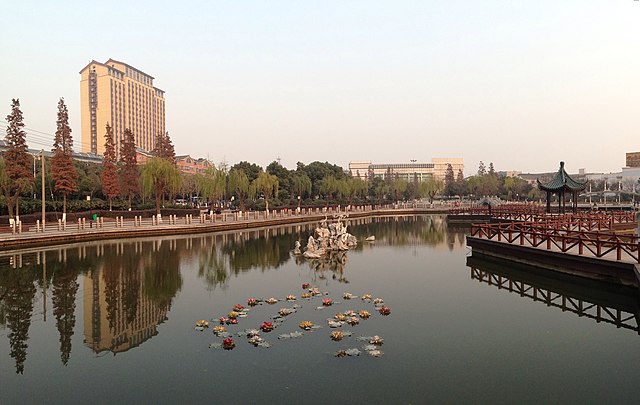Yixing clay is a type of clay from the region near the city of Yixing in Jiangsu Province, China, used in Chinese pottery since the Song dynasty (960–1279) when Yixing clay was first mined around China's Lake Tai. From the 17th century on, Yixing wares were commonly exported to Europe. The finished stoneware, which is used for teaware and other small items, is usually red or brown in colour. Also known as zisha (宜興紫砂) ware, they are typically left unglazed and use clays that are very cohesive and can form coils, slabs and most commonly slip casts. These clays can also be formed by throwing. The best known wares made from Yixing clay are Yixing clay teapots, tea pets, and other teaware.
Five Yixing clay teapots - showing a variety of styles from formal to whimsical.
A Yixing zisha teapot - "Melon", which combines Zi Ni and Zhu Ni clays
Yixing teapot in green colour
Brush rest, a cicada on a branch
Yixing is a county-level city administered under the prefecture-level city of Wuxi in southern Jiangsu province, China, and is part of the Yangtze River Delta. The city is known for its traditional Yixing clay ware tea pots. It is a pene-exclave with Changzhou. The city spans an area of 1,996.6 square kilometres (770.9 sq mi), and has a registered hukou population of about 1,075,800 as of 2020.
A park in Yixing
A teapot dating to the reign of the Qianlong Emperor, made from the city's famous Yixing ware
Yixing is home to many lakes, including the one shown here
Traditional architecture in Yixing








